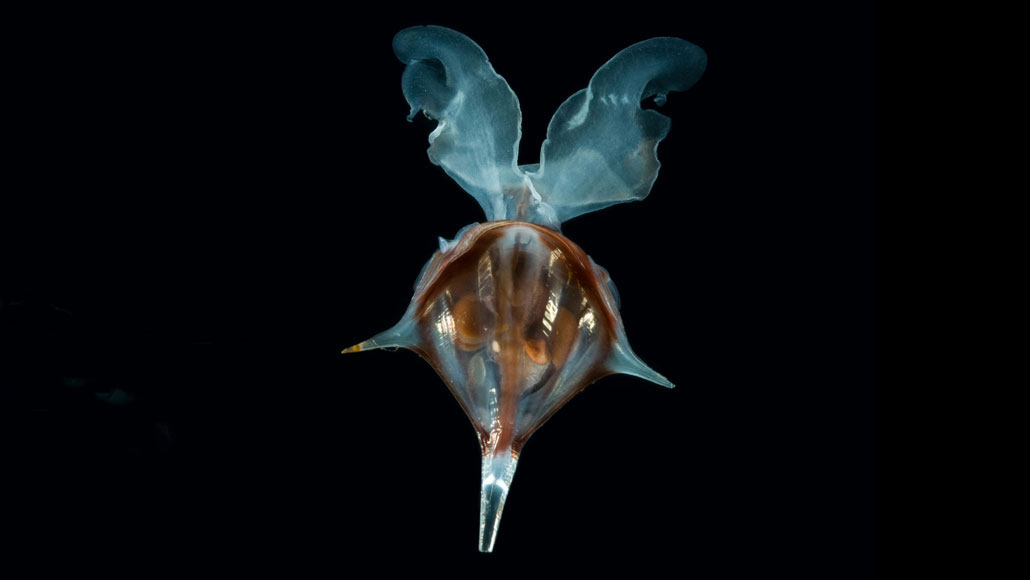
Different species of marine snails known as “sea butterflies,” such as Diacria trispinosa (shown), have distinct swimming styles that depend on the sizes and shapes of their shells.
David Shale/Nature Picture Library/Alamy

Different species of marine snails known as “sea butterflies,” such as Diacria trispinosa (shown), have distinct swimming styles that depend on the sizes and shapes of their shells.
David Shale/Nature Picture Library/Alamy